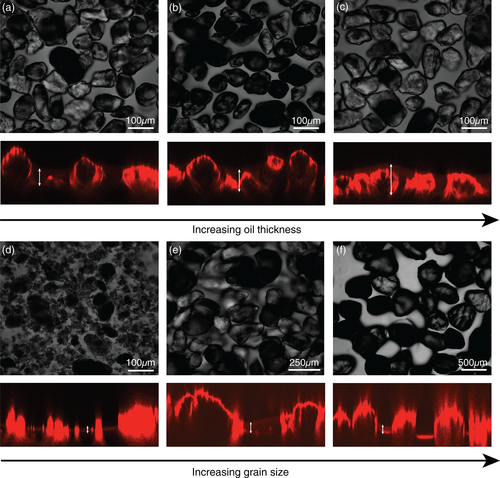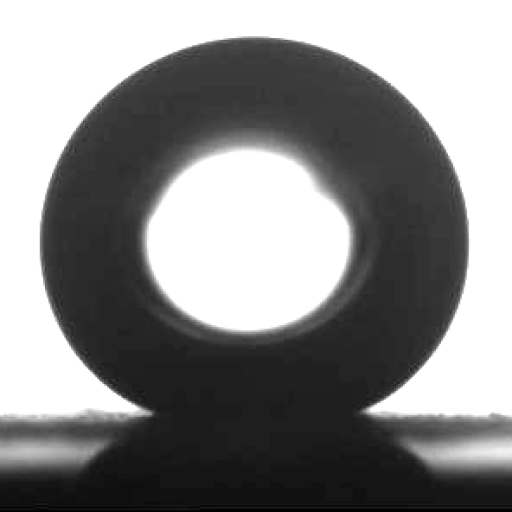Water-repellent Soils
The wettability of soil affects a wide range processes such as agricultural productivity, debris flows and sediment formation. Sandy soil can become extremely water-repellent through the condensation of natural waxes on the soil grains after wildfires or through other processes, such as through the use of grey water. These sort of soils can be thought of as examples of granular superhydrophobic materials [1,2].

We can hypothesise that hydrophobic soil grains in the presence of oil from natural hydrocarbon leakage or oil spills may create a slippery liquid-infused porous surfaces (SLIPS) surface [3]. We can test this idea by performing experiments in the laboratory on model soils with different grain sizes. By examining the interactions with water before and after impregnation with silicone oil, we find that SLIPS may occur in natural granular materials and that the effect can be long-lasting. The model soils exhibit extreme water-shedding, illustrated by low water droplet sliding angles. This mechanism for water-shedding in soil and sediment systems has not been considered previously. The results have important implications for agricultural hydrophobicity on shallow slopes.
Publication
- Water repellent soil and its relationship to texture and hydrophobicity G. McHale, M.I. Newton and N.J. Shirtcliffe, Eur. J. Soil Sci. 56 (2005) 445-452
- Superhydrophobic surfaces: A model approach to predict contact angle and surface energy of soil particles J. Bachmann and G. McHale, Eur. J. Soil Sci. 60 (2009) 420-430
- Slippery liquid-infused porous surfaces: The effect of oil on the water repellence of hydrophobic and superhydrophobic soils, R. McCerery, J. Woodward, G. McHale, K. Winter, S. Armstrong and B.V. Orme, Eur. J. Soil Sci. 72 (2021), 963-978
